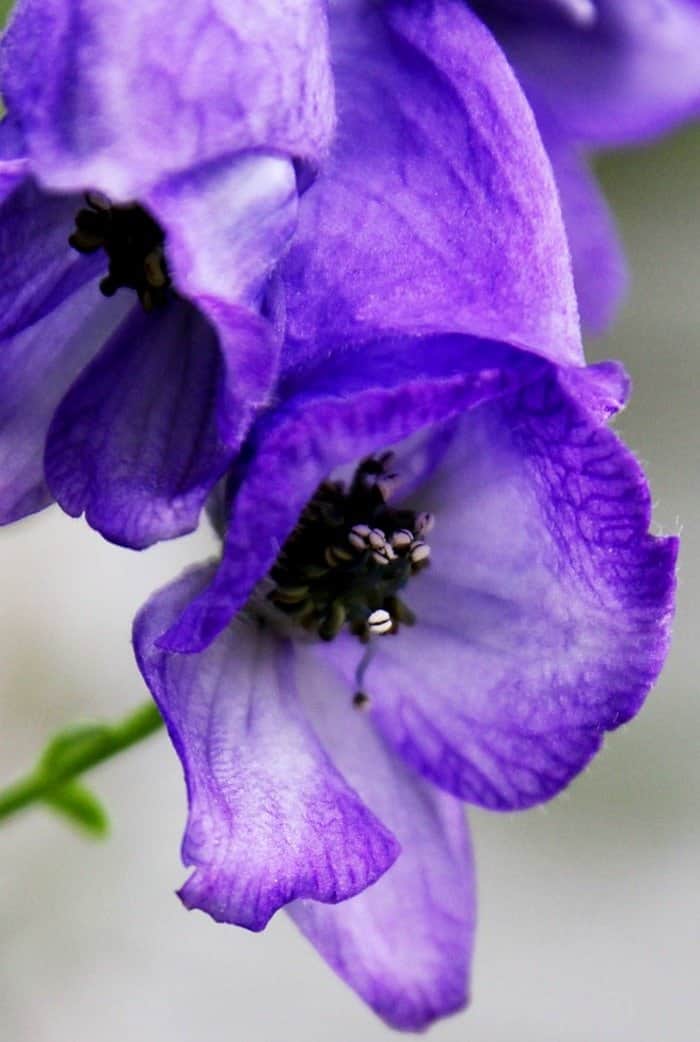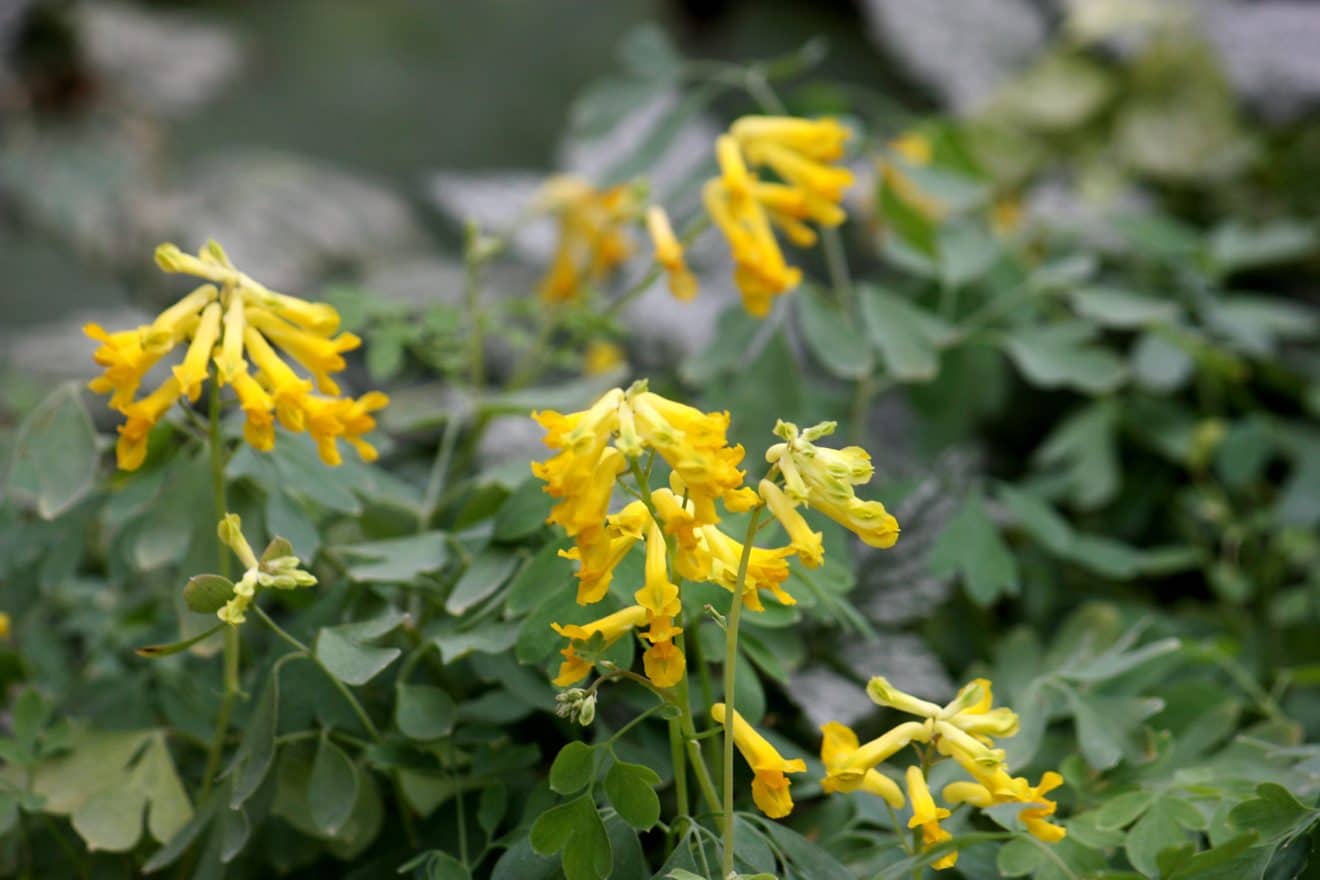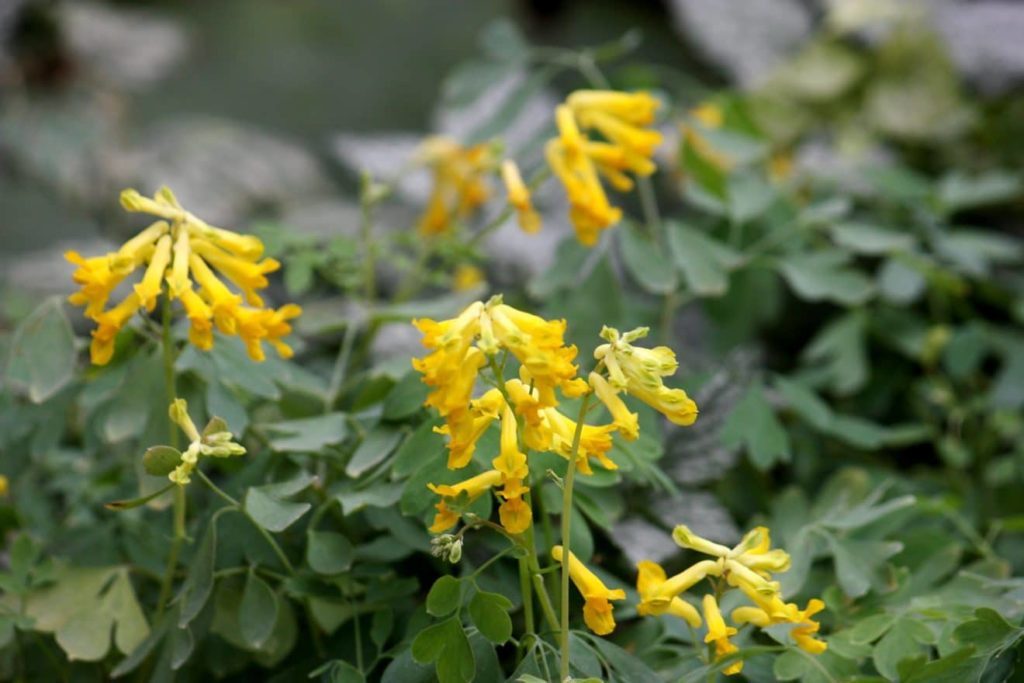
The days are shorter now, and finally we have cool weather. I’ve begun cutting perennials down, but leave anything still blooming for the bees, if only for another week or two. I have a daylily with a stem and one big bud — I wonder if it will open?
Two perennials are carrying on like this is the moment they’ve been waiting for. Most impressive is the azure monkshood (sometimes known as wolfsbane), Aconitum carmichaelii ‘Arendsii’ (Zone 4), now four feet (1.2 m) tall, with several sturdy stems loaded with deep purple-blue hooded flowers. Shorter species of monkshood with ivory, yellow or bi-colour flowers blossom in summer, but this dramatic plant with dark petals waits until there’s not much competition before appearing by itself.
All parts of monkshoods are poisonous, and both wild and domestic animals know not to ingest it. (Perennial plant author Allan Armitage writes that dogs and cats are smarter than the average gardener!) If you see one of these plants, look up into one of the hooded flowers, and you’ll discover a cluster of beautiful black stamens.

You might be familiar with the yellow fumewort, Corydalis lutea (Zone 6, and possibly Zone 5 near a warm wall) that runs freely through partial shade, never giving offense and easily removed when unwanted. It grows in clumps of ferny leaves nine to 15 inches (22 to 40 cm) tall and is always full of yellow flowers. But do you know its cousin, C. ochroleuca, the white and yellow fumewort? This fumewort sets less seed, consequently it’s slower to move through the garden. Both are useful and decorative plants, willing to grow in dry shade, and lasting until hard frost. They’re full of flowers now and looking vigorous, and the pale C. ochroleuca is quite special. The easiest way to get some is to bake muffins for a friend who has them, and ask for a clump. You’ll soon have it blooming in your garden.










Hi Sharon,
Yes, I’ve had that corydalis around all summer, but it’s most beautiful in autumn, when I appreciate it so much.
— Judith
Hi Beverley,
That sounds like a good mulch combination, but I think you’ll still be seeing it in a rough state with visible leaves in spring. Organic mulch materials decompose slowly, depending on the microclimate of your garden. Usually a thick layer of leaves or shredded bark mulch put down in autumn will be mostly decomposed by the end of the following summer. Decomposition is faster in bright sunlight, and slower in shade. Adding shrimp mulch to the mix might speed things up, as would aged animal manure (because of the enzymes and microbes contained in those materials).
Digging in leaves and allowing them to decompose underground is good for soil texture and fertility, but won’t help to prevent weed growth and soil erosion. But if you put down leaves on all exposed soil in autumn, by spring they’ll be softer and less likely to blow around. Seeing leaves on the soil means a good gardener is in residence, and you can be proud of that!
— Judith
The little corydalis are nice surprises this time of year. Almost any new bloom can be construed as a surprise as the autumn wears on!
Just have a quick question with respect to fall mulching.
I have saved my recent grass clippings, which include fall leaves, and dumped them in the forest behind my lot. I was thinking I would add shrimp compost and old top soil that I never got around to spreading with the grass/leaves clippings. Would this work as a good groundcover/mulch AND will it dissipate with the winter weather in a 5B area southwest of Montreal???
Every year, I try to do this, but am too busy. Just need to know if this is a good combination, or will I be picking out leaves “manually” from my gardens next spring??? Or, maybe I should be digging them into the ground rather than raking them up???
Your advice will be greatly appreciated.
From a slow learner, anxious to learn new ways!!
Hi Gail (Oct. 20),
It sure is! These ‘Arendsii’ monkshood come at such an unexpected time, right at the end of the season, and seem to flirt with the danger of frost. I love to see them.
— Judith
The purple monkshood is so wonderful right now: so bold!